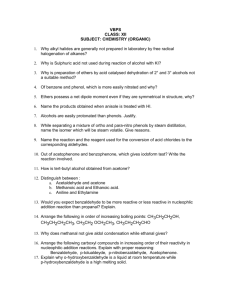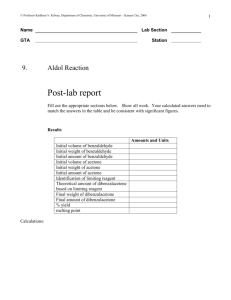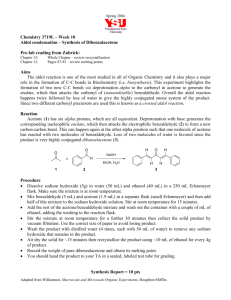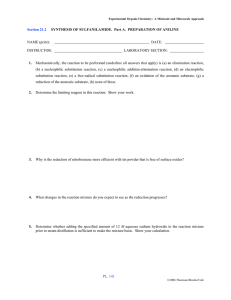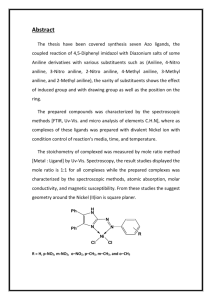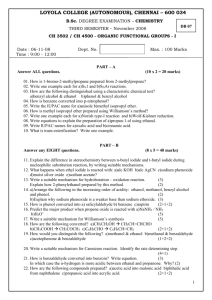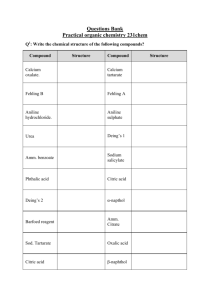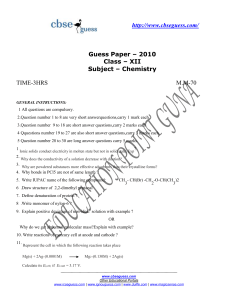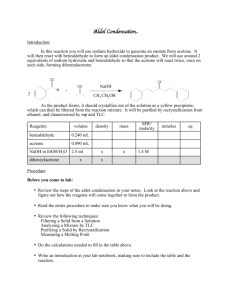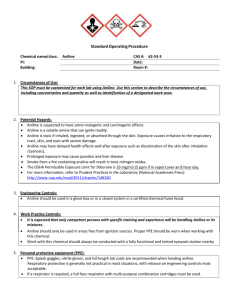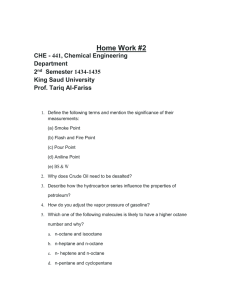org test 1
advertisement
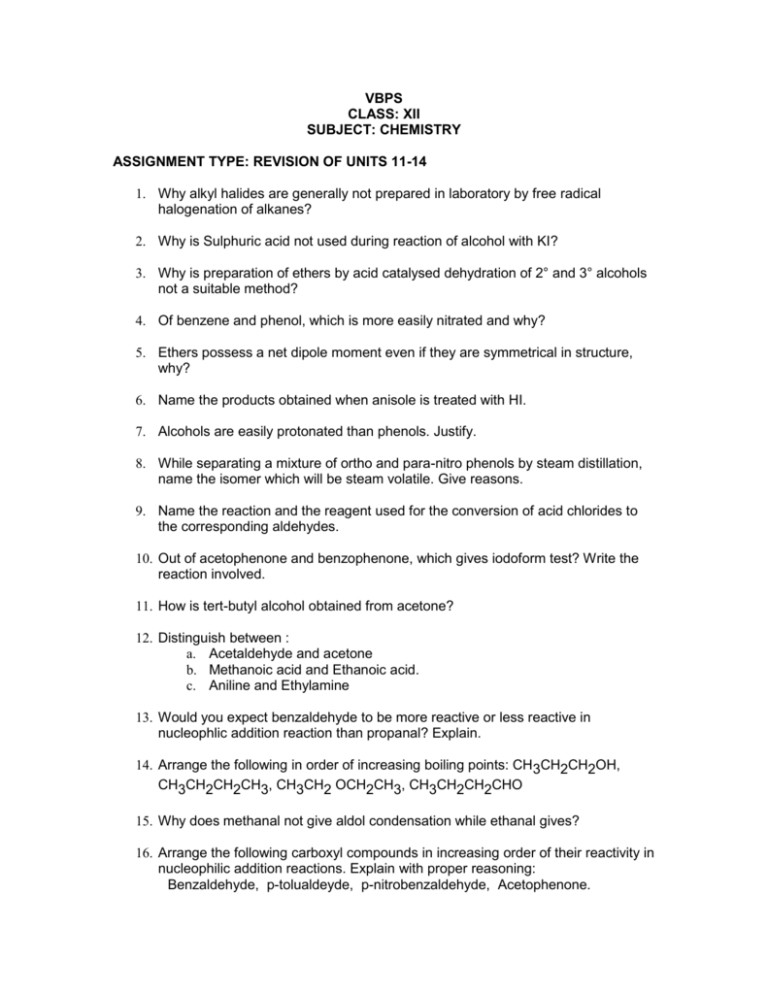
VBPS CLASS: XII SUBJECT: CHEMISTRY ASSIGNMENT TYPE: REVISION OF UNITS 11-14 1. Why alkyl halides are generally not prepared in laboratory by free radical halogenation of alkanes? 2. Why is Sulphuric acid not used during reaction of alcohol with KI? 3. Why is preparation of ethers by acid catalysed dehydration of 2° and 3° alcohols not a suitable method? 4. Of benzene and phenol, which is more easily nitrated and why? 5. Ethers possess a net dipole moment even if they are symmetrical in structure, why? 6. Name the products obtained when anisole is treated with HI. 7. Alcohols are easily protonated than phenols. Justify. 8. While separating a mixture of ortho and para-nitro phenols by steam distillation, name the isomer which will be steam volatile. Give reasons. 9. Name the reaction and the reagent used for the conversion of acid chlorides to the corresponding aldehydes. 10. Out of acetophenone and benzophenone, which gives iodoform test? Write the reaction involved. 11. How is tert-butyl alcohol obtained from acetone? 12. Distinguish between : a. Acetaldehyde and acetone b. Methanoic acid and Ethanoic acid. c. Aniline and Ethylamine 13. Would you expect benzaldehyde to be more reactive or less reactive in nucleophlic addition reaction than propanal? Explain. 14. Arrange the following in order of increasing boiling points: CH3CH2CH2OH, CH3CH2CH2CH3, CH3CH2 OCH2CH3, CH3CH2CH2CHO 15. Why does methanal not give aldol condensation while ethanal gives? 16. Arrange the following carboxyl compounds in increasing order of their reactivity in nucleophilic addition reactions. Explain with proper reasoning: Benzaldehyde, p-tolualdeyde, p-nitrobenzaldehyde, Acetophenone. 17. Explain why o-hydroxybenzaldehyde is a liquid at room temperature while p-hydroxybenzaldehyde is a high melting solid. 18. Write aldol condensation products of the following: a. Methanal and propanal b. Propanal and butanal 19. Give the structures of A, B and C in the following compounds : NaCN OH– NaOH + Br2 (i) CH3CH2I ——————— A —————— B —————— C Partial Hydrolysis NH3 NaOBr NaNO2/HCl (ii) CH3COOH ——————— A —————— B —————— C 20. Explain why: (i) Ethylamine is soluble in water but aniline is not. (ii) Aniline does not undergo Friedel Crafts reaction. (iii) Aniline is acetylated before bromination.
